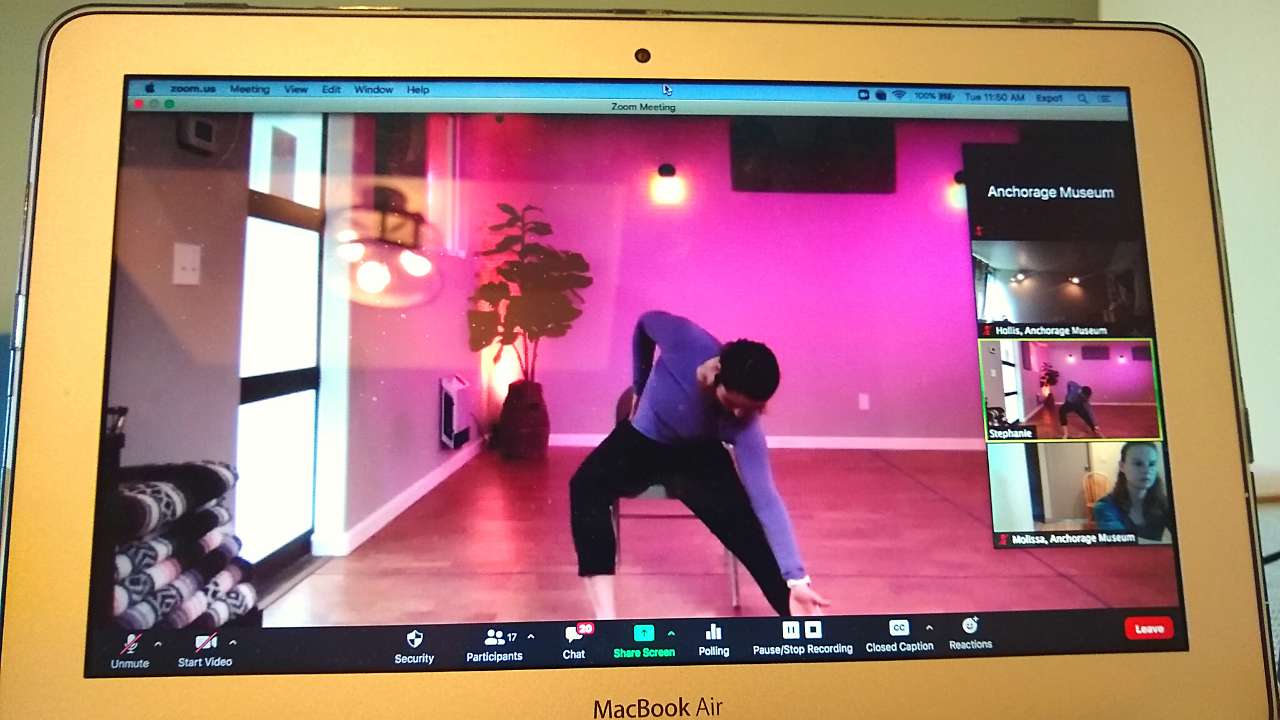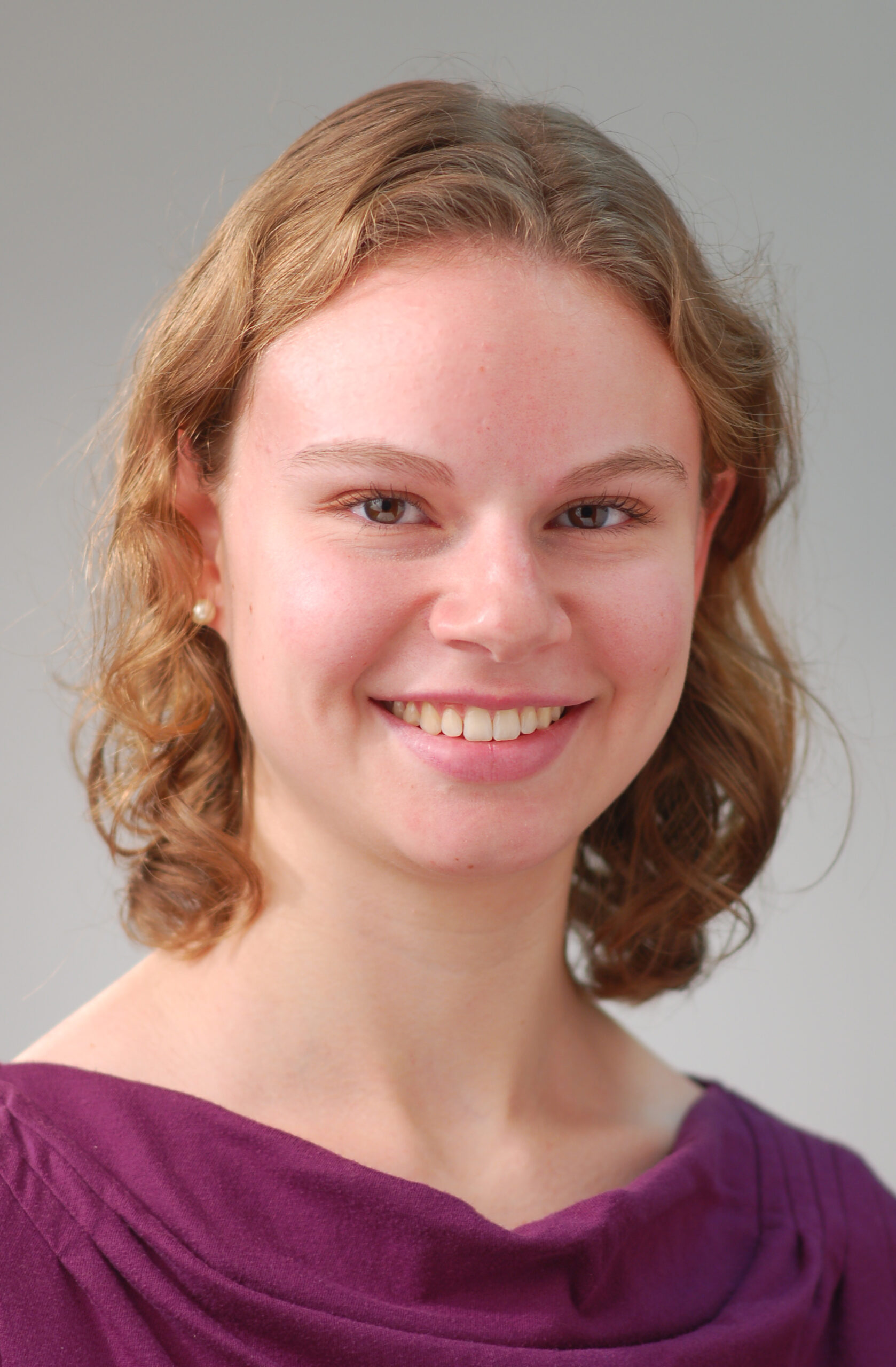
On a Tuesday morning in July, older adults from across Southcentral Alaska danced to feel-good songs, including Bobby Darin’s “Splish Splash” and Carole King’s “I Feel the Earth Move,” from the comfort of their homes and an assisted living center.
It was the latest class in a four-week series from the Anchorage Museum called “Vital & Creative: Movement at Home for Ages 55+,” inspired by a similarly named in-person program launched in late 2019. The goal of this subsequent series was to adapt in-person arts classes to virtual workshops, and both programs were made possible by the generous support of Aroha Philanthropies.
As a museum educator, I’ve been able to observe positive outcomes for all involved in these virtual classes, including my own professional development in creating and supporting them. I share my experiences here in the hope they may inspire others as they develop virtual programming.
Building on Previous Work
As we began planning, we considered a variety of factors specific to virtual arts classes. These included which teaching artists were comfortable with virtual platforms, material delivery, and camera placement. We decided to adapt our in-person “Vital & Creative: Expressive Movement for Ages 55+” workshop series for several reasons. First, we wanted to build on an established and successful in-person museum program. Second, we wanted to avoid the logistics of getting materials to participants. Movement classes, which do not require physical materials, met both criteria. Additionally, we wanted to provide older adults with an opportunity to do physical activity at a time when many may be unable to leave their homes or attend group fitness classes.
The virtual series was publicized through social media, the museum’s e-newsletter, and emails to our older adult mailing list compiled from past “Vital & Creative” classes and waitlists. We also notified partner assisted living facilities.
Transitioning Online
Unsurprisingly, the largest difference between our in-person and virtual movement classes was technology. We anticipated minimal need for special technology since—unlike visual arts classes—close-up camera shots would not be necessary, but we did discover that we needed special audio equipment. Our preparations fell into two main categories: supporting the teaching artist and supporting the participants.
We worked with teaching artist Stephanie Wonchala, an Anchorage dance educator and director of Pulse Dance Company, to identify technology needs. We were eager to work with Stephanie for our first foray into digital movement learning since she already used Zoom to deliver virtual youth dance classes. In talking about her experience with the format, she told us how challenging it was for dancers to hear both her directions and the music at the same time. This presented an unexpected opportunity for museum interdepartmental collaboration. Exhibitions and information technology staff collaborated on creating an audio-set up with a new mixer for Stephanie, which allowed for a clearer balance of her speaking with the music. Once trained, Stephanie was able to operate the audio equipment independently and teach from her dance studio. Museum staff provided all other technology support so Stephanie could focus on teaching. Preparing for virtual delivery allowed departments to work together in new ways and increased the internal visibility of these classes, two things we want to continue.
Participants also needed support from staff to access and participate in these virtual classes. To help them, we created a “Participating in a Zoom Meeting” quick-start guide and emailed it to registrants before each class. We then followed up with a basic Zoom tutorial at the beginning of each class. We dedicated one museum staff member in each Zoom meeting to tech support and provided a phone number for participants to phone in questions that could not be easily addressed through Zoom’s chat feature.
Surprisingly, we did not field many tech questions from participants. Although I would like to think our advance preparations helped mitigate questions, I think the lack of questions may actually suggest our participants had a basic level of digital literacy and previous Zoom experience to begin with. As virtual learning expands, I hope to also reach older adults who are less experienced with digital technology. This could be done by publicizing classes to younger individuals, who could help their older family members and friends connect to virtual learning opportunities.
To further support participants, we experimented with different closed captioning and transcript services, a process that fostered further museum interdepartmental collaboration. However, the delay between the real-time instruction and the captioning was particularly challenging for a movement class: the teacher was often demonstrating different movement than what the captions described.
Participants were gracious about minor obstacles like this, and some shared they still appreciated the captions. This response encouraged me to continue experimenting with closed captioning and other capabilities of online programming, especially because our experience exposed gaps in the accessibility of digital programs.
We also used Zoom’s recording feature to save a copy of Stephanie’s camera feed, and provided participants with links to these recordings so they could repeat the classes on their own time.
Positive Response
Each class followed the same structure. Museum staff led introductions, a land acknowledgement, a basic Zoom tutorial, and information on how to access the closed captions. Stephanie then took the lead and guided participants through a movement class that was bookended with seated exercises. To give participants with limited mobility examples of how to adapt movements, I participated in each class while seated. We paused for a short break in the middle and reflected on how everyone felt at the end of the class.
Participant survey feedback was very positive. They appreciated Stephanie’s energy and upbeat playlist. One stated: “I loved Stephanie’s cheerful and encouraging presentation. After just the first class, I felt happy, which is a good thing to be feeling these days.”
An unexpected and powerful story emerged from a participant who had COVID-19 earlier this year. She explained, “This class has been perfect to gradually regain strength and confidence in my body… I am healing and getting my body back.”
Our teaching artist also responded positively. Stephanie appreciated the opportunity to lead classes for a new audience. She also was glad for the logistical and financial support from the museum. She is considering continuing virtual classes for seniors as part of her dance studio offerings. We are happy to support a local artist by providing meaningful work opportunities during this time, especially since many artists are experiencing economic and psychological hardships during the pandemic.
The virtual class format allowed us to reach more people per class than the physical classroom at the museum could comfortably accommodate. We also reached individuals who had not previously participated in the “Vital & Creative” series. This could be because different people felt more comfortable doing movement in their own homes, or because the barrier of traveling to the museum was removed. We know the latter is why residents from a local assisted living facility were able to participate.
Looking Forward
As we consider future virtual programming for this audience, I want to include local assisted living facilities earlier in the planning process to better understand their unique participation barriers. For instance, we know that one facility participated but another did not because of internet connectivity issues. I also hope to expand opportunities for participants to get to know each other and engage in deeper conversations in virtual settings. This might be accomplished by using Zoom breakout rooms for small group conversations, or by using an online platform where participants can communicate with each other outside of classes.
This pilot series demonstrated the value of virtual classes for all involved: participants, the teaching artist, and museum staff. The shared experience of moving together—even while apart—helped bridge the isolation so many may feel right now.
The Anchorage Museum is part of Aroha Philanthropies Seeding Vitality Arts in Museums national cohort, and our “Vital & Creative” classes are made possible through Aroha’s generous support. Aroha’s Seeding Vitality Arts in Museums initiative addresses the urgent need to change the narrative about what it means to grow old in America, combat ageism, and promote a healthy change in attitudes toward aging as senior populations grow.
About the author:
Molissa Udevitz is an Educator at the Anchorage Museum, where she develops and leads a variety of interdisciplinary programs for youth and the general public. She actively works to make the museum more inclusive and accessible for people who typically may not visit museums. Molissa is also a dancer and choreographer who enjoys sharing her love of movement with others.








